FLEET SAFETY
The Complete Guide to Municipal Fleet Safety Technology
WHY MUNICIPAL FLEET SAFETY MATTERS
Safer fleets mean safer communities. But without the right technology in place, municipalities face rising risk, operational blind spots, and growing pressure to do more with less. For many teams, outdated systems make it hard to prevent accidents, stay compliant, or respond quickly when incidents happen.

ACCIDENTS
Nearly 31% of workplace fatalities involving motor vehicles happen on public roads—and municipal vehicles are no exception.

COST
The average fleet collision costs $15,000–$225,000, thats including injury, fatality, and property damage.

COMPLIANCE
Provinces like Ontario are tightening regulations on driver safety reporting, inspections, and telematics use across public fleets.
From rising accident costs to evolving regulatory demands, municipalities need smarter tools to protect drivers, improve visibility, and prove performance. This guide explores the most common safety challenges in municipal fleet management—and how modern fleet safety technology can help solve them.

KEY CHALLENGES IN PUBLIC SECTOR FLEET MANAGEMENT
Municipal fleet operations often run on legacy systems not built for today’s safety expectations. Between aging equipment and limited data, it’s difficult to prevent accidents, stay audit-ready, or proactively manage risk. The key challenges most municipal teams face include:
- Outdated tracking systems
- Risk Exposure
- Regulatory Pressure
Solving Today’s Municipal Fleet Safety Challenges with the Right Technology
Many Canadian municipalities are working hard to modernize fleet operations—but outdated systems, limited visibility, and growing safety expectations often get in the way. Addressing these challenges requires more than just replacing aging hardware. It takes the right combination of connected technology, real-time data, and a proactive safety strategy.
The Visibility Gap in Legacy Systems
Disconnected tracking tools and outdated software make it difficult to know where vehicles are, how they’re performing, or if safety protocols are being followed. This lack of visibility increases the risk of missed service windows, delayed emergency response, and public complaints.
Modern GPS tracking systems powered by Geotab provide real-time asset location, route history, and usage insights—all from a single dashboard. With better visibility comes faster response times and fewer operational blind spots. Learn how DiCAN helps fleets overcome the limitations of legacy systems.
Inconsistent Driver Oversight
Municipal fleet drivers operate independently across long shifts and wide service areas. Without consistent monitoring, risky behaviors like harsh braking, speeding, or distracted driving often go uncorrected.
According to the Traffic Injury Research Foundation, aggressive driving plays a role in more than half of all fatal vehicle collisions in Canada. DiCAN’s driver behavior monitoring tools use telematics data to identify trends, support coaching, and encourage safer habits over time. See five ways fleet managers can promote a culture of safety.
Documentation and Compliance Pressure
Regulatory requirements for inspection logs, route validation, and driver safety reporting continue to grow—especially in provinces like Ontario. Manual compliance processes not only eat into staff time but also increase the risk of fines and failed audits.
Digital reporting tools simplify compliance by automatically capturing and storing data required for inspections, risk management, and insurance documentation. These tools also help build public trust by showing proof of service delivery and safety improvements.
Winter Conditions and Emergency Response
For many municipalities, winter is the most dangerous time of year on the road. Ice, reduced visibility, and high-pressure service windows increase the likelihood of incidents—especially when equipment is spread thin or data is incomplete.
Winter-specific technology like DiCAN’s Plow Pilot helps optimize snow routes, reduce service overlap, and document exactly when and where roads were cleared. Explore how winter operations equipment supports safer streets.
Budget Constraints and ROI Expectations
Fleet upgrades are often seen as expenses rather than investments. But the numbers tell a different story. The average on-road collision involving a municipal vehicle costs between $5,000 and $25,000 in direct expenses—not including legal costs or lost public trust.
Investing in connected safety tools can help reduce accidents, lower insurance premiums, and extend the lifespan of vehicles. Learn how one Ontario municipality made the switch to Canadian-backed safety solutions and saw improvements in cost control, visibility, and compliance. Read the Wellington County case study.
Why Fleet Safety Matters | Key Challenges | Technology Solutions | Spotlight Products | Resources & Case Studies
Solving Today’s Municipal Fleet Safety Challenges with the Right Technology
Many Canadian municipalities are working hard to modernize fleet operations—but outdated systems, limited visibility, and growing safety expectations often get in the way. Addressing these challenges requires more than just replacing aging hardware. It takes the right combination of connected technology, real-time data, and a proactive safety strategy.
The Visibility Gap in Legacy Systems
Disconnected tracking tools and outdated software make it difficult to know where vehicles are, how they’re performing, or if safety protocols are being followed. This lack of visibility increases the risk of missed service windows, delayed emergency response, and public complaints.
Modern GPS tracking systems powered by Geotab provide real-time asset location, route history, and usage insights—all from a single dashboard. With better visibility comes faster response times and fewer operational blind spots.
Read how the Green Fleet Dashboard helps make real-time data actionable.
Inconsistent Driver Oversight
Municipal fleet drivers operate independently across long shifts and wide service areas. Without consistent monitoring, risky behaviors like harsh braking, speeding, or distracted driving often go uncorrected.
According to the Traffic Injury Research Foundation, aggressive driving plays a role in more than half of all fatal vehicle collisions in Canada. DiCAN’s driver behavior monitoring tools use telematics data to identify trends, support coaching, and encourage safer habits over time.
Documentation and Compliance Pressure
Regulatory requirements for inspection logs, route validation, and driver safety reporting continue to grow—especially in provinces like Ontario. Manual compliance processes not only eat into staff time but also increase the risk of fines and failed audits.
Digital reporting tools simplify compliance by automatically capturing and storing data required for inspections, risk management, and insurance documentation. These tools also help build public trust by showing proof of service delivery and safety improvements.
See how Wellington County improved visibility and compliance with DiCAN.
Winter Conditions and Emergency Response
For many municipalities, winter is the most dangerous time of year on the road. Ice, reduced visibility, and high-pressure service windows increase the likelihood of incidents—especially when equipment is spread thin or data is incomplete.
Winter-specific technology like DiCAN’s Plow Pilot helps optimize snow routes, reduce service overlap, and document exactly when and where roads were cleared.
Explore how Plow Pilot supports safer, more efficient winter operations.
Budget Constraints and ROI Expectations
Fleet upgrades are often seen as expenses rather than investments. But the numbers tell a different story. The average on-road collision involving a municipal vehicle can cost over $48,000—and even more when litigation or lost productivity is factored in.
Investing in connected safety tools can help reduce accidents, lower insurance premiums, and extend the lifespan of vehicles. Learn how one Ontario municipality made the switch to Canadian-backed safety solutions and saw improvements in cost control, visibility, and compliance.
WANT TO GO DEEPER ON MUNICIPAL FLEET SAFETY?
Fleet safety isn’t solved with one tool—it takes consistent strategy, data-backed decisions, and smart operations. Explore our latest insights on telematics, driver monitoring, and how technology is reshaping municipal fleet management:
- How Driver Behavior Monitoring Reduces Risk Across Public Works Fleets
- What Municipalities Need to Know About Collision Avoidance Systems
- Winter Fleet Safety: Tools and Tactics for Harsh Conditions
- How Asset Tracking Improves Service, Accountability, and Safety
- Geotab Telematics: Real-Time Visibility for Municipal Fleets
Want more insights? Visit the DiCAN blog for updates, real-world use cases, and safety strategies that work.

Cameras
Collision Avoidance
Tracking & Telematics
Winter Operations
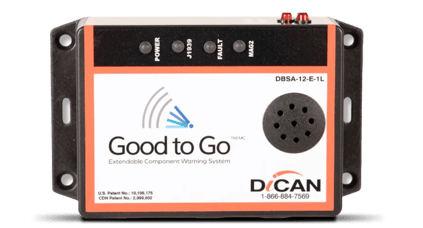
COLLISION AVOIDANCE
Municipal fleets operate in dense, unpredictable environments where blind spots, pedestrian traffic, and tight corners increase risk. DiCAN’s collision avoidance systems use radar-based alerts and pedestrian detection technology to help drivers avoid front-end, side, and low-speed collisions. The result: fewer incidents, fewer claims, and safer roads for everyone.
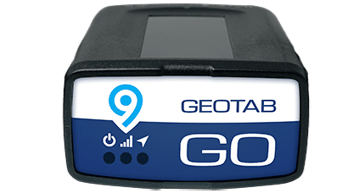
ASSET & GPS TRACKING
From snowplows to utility trucks, public fleets need to know where their assets are and how they're being used. DiCAN’s asset tracking for fleets, powered by Geotab telematics, provides real-time GPS data, utilization insights, and proof of service. It’s a simple way to reduce idle time, prevent loss, and increase operational visibility.
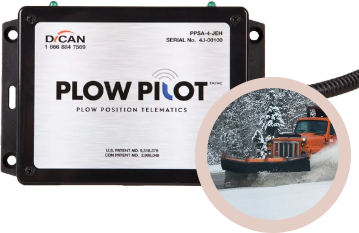
WINTER
OPERATIONS
Winter weather can strain municipal fleets—especially when service demands spike and visibility drops. DiCAN’s Plow Pilot and other winter operations equipment tools help optimize routes, document road treatment, and support safer outcomes for drivers and the public. No guesswork. Just real-time data you can trust.
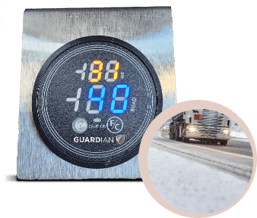
DRIVER BEHAVIOR
MONITORING
When driver actions go unmonitored, safety risks—and liability—go up. DiCAN’s driver behavior monitoring tools capture key metrics like speeding, harsh braking, and idling to identify trends and enable coaching. Empower your team to make safer decisions behind the wheel with data-driven accountability.
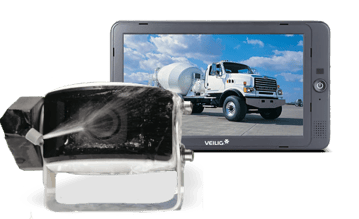
ROI OF FLEET SAFETY INVESTMENTS
Fleet safety is often seen as a cost—but the data shows it's a savings opportunity. Avoiding just one serious incident can offset the cost of implementing connected safety tools. DiCAN helps municipalities lower accident-related costs, improve uptime, and invest in smarter operations with measurable returns.
Trusted by Fleet Professionals Like You


GET A SAFETY TECH DEMO
Discover how Geotab’s automated reporting, real-time safety coaching, and data-driven insights can unlock measurable savings for your fleet—starting today.




